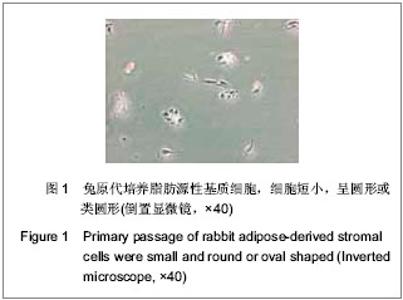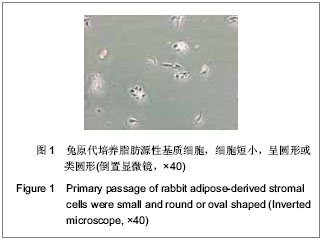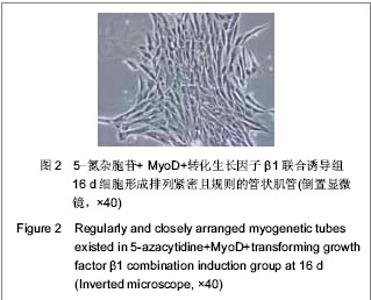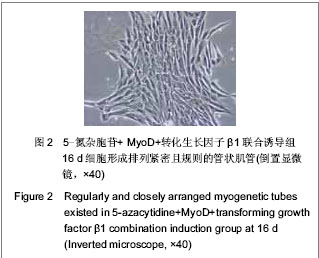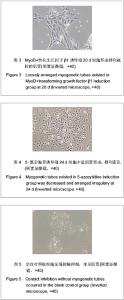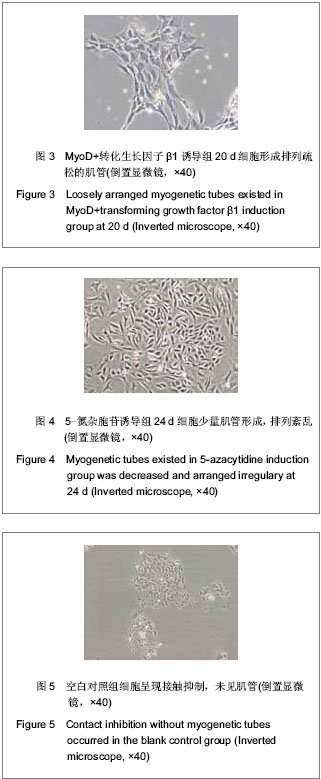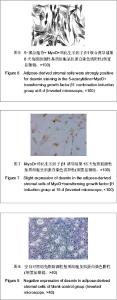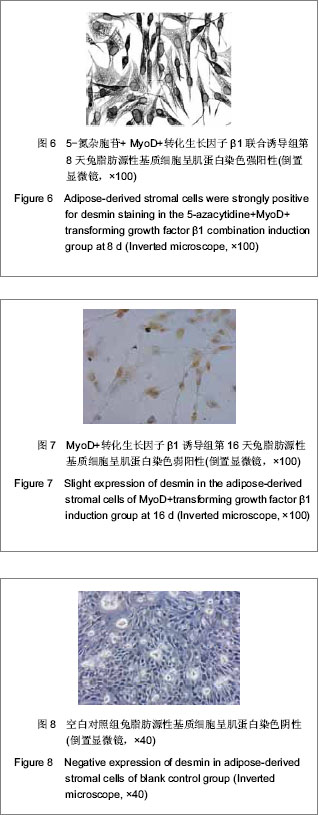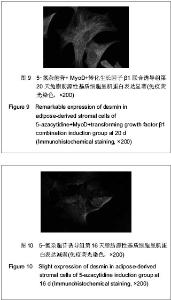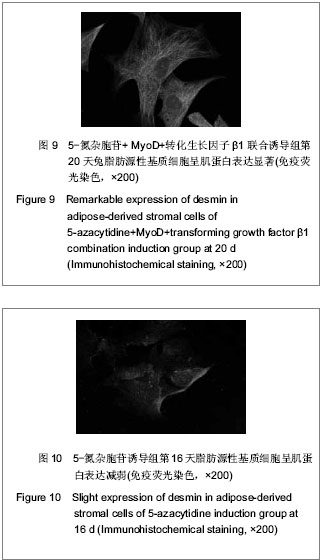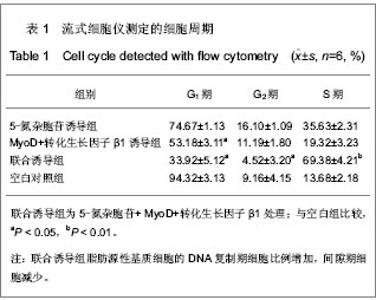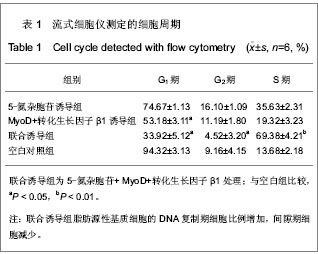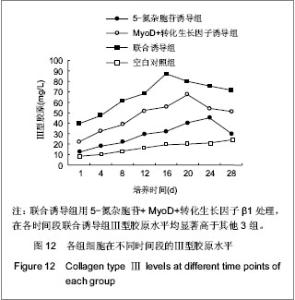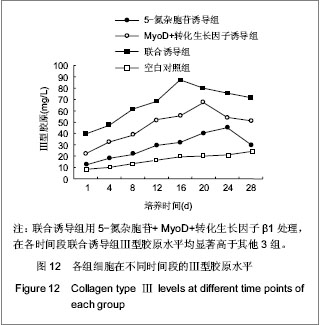Chinese Journal of Tissue Engineering Research
Previous Articles Next Articles
Myogenetic potential of rabbit adipose-derived stromal cells
Liu Jing1, Lin Wan-jun1, Liu Yin-Zhong2, Li Xiao-mian2, Guo Hong-gang3
- 1Department of General Gynecology, Tianjin Central Hospital of Obstetrics and Gynecology, Tianjin 300100, China; 2College of Basic Medicine, Tianjin Medical University, Tianjin 300072, China; 3Department of Orthopedics, General Hospital of Tianjin Medical University, Tianjin 300052, China
-
Received:2012-08-29Revised:2012-10-08Online:2013-07-02Published:2013-07-02 -
About author:Liu Jing☆, M.D., Associate chief physician, Department of General Gynecology, Tianjin Central Hospital of Obstetrics and Gynecology, Tianjin 300100, China jeanjingliu@yahoo.com.cn -
Supported by:the Technology Fund of Tianjin Health Bureau No. 2011KZ68*
CLC Number:
Cite this article
Liu Jing, Lin Wan-jun, Liu Yin-Zhong, Li Xiao-mian, Guo Hong-gang. Myogenetic potential of rabbit adipose-derived stromal cells[J]. Chinese Journal of Tissue Engineering Research, doi: 10.3969/j.issn.2095-4344.2013.27.011.
share this article
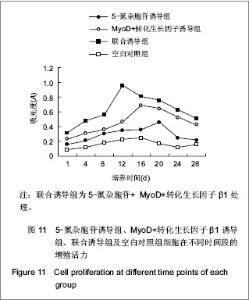
2.4 各组细胞的增殖情况 联合诱导培养的细胞较MyoD+转化生长因子β1诱导组快,细胞群体倍增时间为32 h,大约16 d达80%融合,MyoD+转化生长因子β1诱导组倍增时间为48 h,20 d达融合;而5-氮杂胞苷诱导组增殖缓慢,表现为群体倍增时间延长至66 h,约24 d达融合;此外,联合诱导组的细胞接种后第4天开始增殖,第8天进入倍增期,第12天达峰值,第20天步入平台期,诱导第28天细胞潜伏期延长,增殖速度有所减慢;MyoD+转化生长因子β1诱导组第12天细胞开始增殖,第16天进入峰值,第28天为衰减期;5-氮杂胞苷诱导组第20天进入峰值,第24天为衰减期;对照组细胞增殖能力均较前两组延缓,生长曲线见图11。"
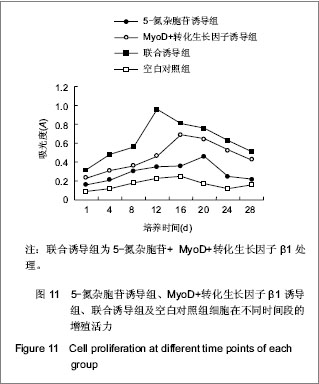
| [1] Hashimoto N, Murase T ,Kondo S, et al.Muscle reconstitution by muscle satellite cell descendants with stem cell-like properties.Development.2004;131(21):5481-5490.[2] Buckinghanl M.Skeletal muscle progenitor cells and the role of Pax genes.C R Biol.2007;330(6)530-533.[3] Konning M, Werker PM, Van Luyn MJ, et al. A global downregulation of microRNAs occurs in human quiescent satellite cells during myogenesis. Differentiation.2012; 84(4): 314-321.[4] Perrucho MH, Ecolan P, Sorensen IL, et al. In vitro characterization of proliferation and differentiation of pig satellite cells. Differentiation.2012;84(4):322-329.[5] Le Grand F, Grifone R, Mourikis P, et al. Six1 regulates stem cell repair potential and self-renewal during skeletal muscle regenerarion. J Cell Biol.2012;198(5):815-832.[6] Brohl D, Vasyutina E, Czajkowski MT, et al. Colonization of the satellite cell niche by skeletal muscle progenitor cells depends on notch signals. Dev Cell.2012;23(3):469-481.[7] 刘杰,傅强.Beagle犬上皮细胞原代培养鉴定及脂肪干细胞诱导成肌的实验研究[J].中华临床医师杂志,2011,5(10):2864- 2871.[8] 刘静,糜若然.组织工程学技术治疗女性张力性尿失禁研究进展[J].中国妇幼保健,2010,25(2):278-280.[9] Mitterberger M, Pinggera GM, Marksteiner R,et al. Adult stem cell therapy of female stress urinary incontinence. Eur Urol. 2008;53(1):169-175.[10] Xu Y, Fu W, Li G, et al. Autologous urothelial cells transplantation onto a prefaricated capsular stent for tissue engineered ureteral reconstruction. J Mater Sci Mater Med. 2012;23(4):1119-1128.[11] Chun SY, Kim HT, Lee JS, et al. Characterization of urine-derived cells frm upper urinary tract in patients with bladder cancer. Urology.2012;79(5):1-7.[12] Zhang J, Gu GL, Liu GH, et al. Ureteral reconstruction using autologous tubular grafts for the management of ureteral strictures and defects: an experimental study. Urol Int.2012; 88(1):60-65.[13] Chen BS, Xie H, Zhang SL, et al. Tissue engineering of bladder using vascular endothelial growth factor gene-modified endothelial progenitor cells. Int J Artif Organs. 2011;34(12):1137-1146.[14] Basu J, Jayo MJ, Ilagan RM, et al. Regeneration of native-like neo-urinary tissue from nonbladder cell sources. Tissue Eng Part A.2012;18(9):1025-1034.[15] Fu Q, Cao YL. Tissue engineering and stem cell application of urethroplasty;from bench to bedside. Urology.2012;79(2): 246-253.[16] Davis NF, Mooney R, Piterina AV, et al. Construction and evaluation of urinary bladder bioreactor for urologic tissue-engineering purposes. Urology.2011;78(9):954-960.[17] Subramaniam R, Hinley J, Stahlschmidt J, et al. Tissue engineering potential of urothelial cells from diseased bladders.J Urol.2011;186(5):2014-2020.[18] Kim YT, Kim DK, Jankowski RJ,et al. Human muscle-derived cell injection in a rat model of stress urinary incontinence. Muscle Nerve.2008;36(3):391-393.[19] Kwon D, Kim Y, Pruchnic R,et al. Periurethral cellular injection: comparison of muscle-derived progenitor cells and fibroblasts with regard to efficacy and tissue contractility in an animal model of stress urinary incontinence. Urology.2006;68(2): 449-454.[20] Yu J,Li Y,Li M,et al.Oxidized low density lipoprotein induced transdifferentiation of bone marrow-derived smooth muscle-like cells into foam-like cells in vitro. Int J Exp Pathol. 2010;91(1):24-33.[21] Tian H, Bharadwaj S, Liu Y, et al. Differentiation of human bone marrow mesenchymal stem cells into bladder cells: potential for urological tissue engineering. Tissue Eng Part A.2010;16(5):1769-1779.[22] Choi YS, Vincent LG, Lee AR, et al. Mechanial derivation of functional myotubes from adipose-derived stem cells. Biomaterials.2012;33(8):2482-2491.[23] Arien-Zakay H, Lazarovici P, Nagler A. Tissue regeneration potential in human umbilical cord blood. Best Pract Res Clin Haematol.2010;23(2):291-303.[24] Hauser PV, De Fazio R, Bruno S, et al. Stem cells derived from human amniotic fluid contribute to acute kidney injury recovery. Am J Pathol.2010;177(4):2011-2021.[25] Longo UG, Loppini M, Berton A, et al. Stem cells from umbilical cord and placenta from musculoskeletal tissue engineering. Curr Stem Cell Res Ther.2012,7(4):272-281.[26] Zuk PA, Zhu M, Mizuno H, et al. Multilineage cells from human adipose tissue: implications for cell-based therapies. Tissue Eng.2001;7(2):211.[27] Cho HH, Kim YJ, Kim SJ, et al. Endogenous wnt signaling promotes proliferation and suppresses osteogenic differentiation in human adipose derived stromal cells. Tissue Eng.2006;12(1):111.[28] Lin CS. Advances in stem cell therapy for the lower urinary tract. World Journal Stem Cell.2010; 26(1):1-4.[29] Shiraishi T, Sumita Y, Wakamastu Y, et al. Formation of engineered bone with adipose stromal cells from buccal fat pad. J Dent Res.2012;9(6):592-597.[30] Man Y, Wang P,guo Y, et al. Angiogenic and osteogenic potential of platelet-rich plasma and adipose-derived stem cell laden alginate microspheres. Biomaterials.2012;33(34): 8802-8811.[31] Geng J, Liu G, Peng F, et al. Decorin promotes myogenic differentiation and mdx mice therapeutic effects after transplantation of rat adipose-derived stemm cells. Cytotherapy. 2012;14(7):877-886 |
| [1] | Pu Rui, Chen Ziyang, Yuan Lingyan. Characteristics and effects of exosomes from different cell sources in cardioprotection [J]. Chinese Journal of Tissue Engineering Research, 2021, 25(在线): 1-. |
| [2] | Zhang Xiumei, Zhai Yunkai, Zhao Jie, Zhao Meng. Research hotspots of organoid models in recent 10 years: a search in domestic and foreign databases [J]. Chinese Journal of Tissue Engineering Research, 2021, 25(8): 1249-1255. |
| [3] | Wang Zhengdong, Huang Na, Chen Jingxian, Zheng Zuobing, Hu Xinyu, Li Mei, Su Xiao, Su Xuesen, Yan Nan. Inhibitory effects of sodium butyrate on microglial activation and expression of inflammatory factors induced by fluorosis [J]. Chinese Journal of Tissue Engineering Research, 2021, 25(7): 1075-1080. |
| [4] | Wang Xianyao, Guan Yalin, Liu Zhongshan. Strategies for improving the therapeutic efficacy of mesenchymal stem cells in the treatment of nonhealing wounds [J]. Chinese Journal of Tissue Engineering Research, 2021, 25(7): 1081-1087. |
| [5] | Liao Chengcheng, An Jiaxing, Tan Zhangxue, Wang Qian, Liu Jianguo. Therapeutic target and application prospects of oral squamous cell carcinoma stem cells [J]. Chinese Journal of Tissue Engineering Research, 2021, 25(7): 1096-1103. |
| [6] | Xie Wenjia, Xia Tianjiao, Zhou Qingyun, Liu Yujia, Gu Xiaoping. Role of microglia-mediated neuronal injury in neurodegenerative diseases [J]. Chinese Journal of Tissue Engineering Research, 2021, 25(7): 1109-1115. |
| [7] | Li Shanshan, Guo Xiaoxiao, You Ran, Yang Xiufen, Zhao Lu, Chen Xi, Wang Yanling. Photoreceptor cell replacement therapy for retinal degeneration diseases [J]. Chinese Journal of Tissue Engineering Research, 2021, 25(7): 1116-1121. |
| [8] | Jiao Hui, Zhang Yining, Song Yuqing, Lin Yu, Wang Xiuli. Advances in research and application of breast cancer organoids [J]. Chinese Journal of Tissue Engineering Research, 2021, 25(7): 1122-1128. |
| [9] | Wang Shiqi, Zhang Jinsheng. Effects of Chinese medicine on proliferation, differentiation and aging of bone marrow mesenchymal stem cells regulating ischemia-hypoxia microenvironment [J]. Chinese Journal of Tissue Engineering Research, 2021, 25(7): 1129-1134. |
| [10] | Zeng Yanhua, Hao Yanlei. In vitro culture and purification of Schwann cells: a systematic review [J]. Chinese Journal of Tissue Engineering Research, 2021, 25(7): 1135-1141. |
| [11] | Kong Desheng, He Jingjing, Feng Baofeng, Guo Ruiyun, Asiamah Ernest Amponsah, Lü Fei, Zhang Shuhan, Zhang Xiaolin, Ma Jun, Cui Huixian. Efficacy of mesenchymal stem cells in the spinal cord injury of large animal models: a meta-analysis [J]. Chinese Journal of Tissue Engineering Research, 2021, 25(7): 1142-1148. |
| [12] | Hou Jingying, Yu Menglei, Guo Tianzhu, Long Huibao, Wu Hao. Hypoxia preconditioning promotes bone marrow mesenchymal stem cells survival and vascularization through the activation of HIF-1α/MALAT1/VEGFA pathway [J]. Chinese Journal of Tissue Engineering Research, 2021, 25(7): 985-990. |
| [13] | Shi Yangyang, Qin Yingfei, Wu Fuling, He Xiao, Zhang Xuejing. Pretreatment of placental mesenchymal stem cells to prevent bronchiolitis in mice [J]. Chinese Journal of Tissue Engineering Research, 2021, 25(7): 991-995. |
| [14] | Liang Xueqi, Guo Lijiao, Chen Hejie, Wu Jie, Sun Yaqi, Xing Zhikun, Zou Hailiang, Chen Xueling, Wu Xiangwei. Alveolar echinococcosis protoscolices inhibits the differentiation of bone marrow mesenchymal stem cells into fibroblasts [J]. Chinese Journal of Tissue Engineering Research, 2021, 25(7): 996-1001. |
| [15] | Fan Quanbao, Luo Huina, Wang Bingyun, Chen Shengfeng, Cui Lianxu, Jiang Wenkang, Zhao Mingming, Wang Jingjing, Luo Dongzhang, Chen Zhisheng, Bai Yinshan, Liu Canying, Zhang Hui. Biological characteristics of canine adipose-derived mesenchymal stem cells cultured in hypoxia [J]. Chinese Journal of Tissue Engineering Research, 2021, 25(7): 1002-1007. |
| Viewed | ||||||
|
Full text |
|
|||||
|
Abstract |
|
|||||
